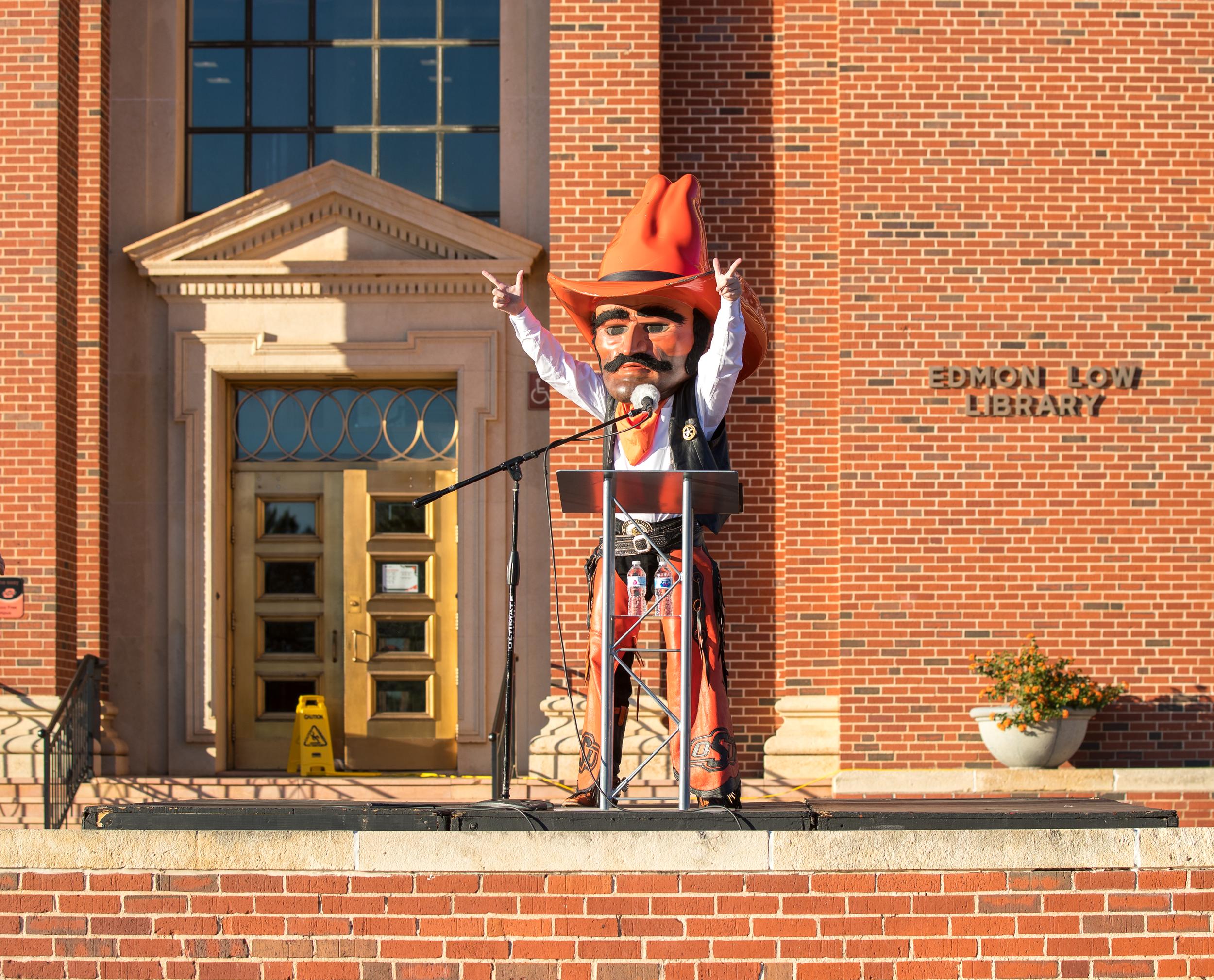17.1 Why Persuade?
Click below to play an audio file of this section of the chapter sponsored by the Women for OSU Partnering to Impact grant.

“Speech is power. Speech is to persuade, to convert, to compel. It is to bring another out of his bad sense into your good sense.” -Ralph Waldo Emerson
When your instructor announced on the syllabus or in class that you would be required to give a persuasive speech for this class, what was your reaction? “Oh, good, I’ve got a great idea,” or, “Oh, no!”? For many people, there is something a little uncomfortable about the word “persuasion.” It often gets paired with ideas of seduction, manipulation, force, lack of choice, or inducement as well as more positive concepts such as encouragement, influence, urging, or logical arguments. You might get suspicious if you think someone is trying to persuade you. You might not appreciate someone telling you to change your viewpoints. On the other hand, you might not think you have any beliefs, attitudes, values, or positions that are worth advocating for in front of an audience.
However, if you think of persuasion simply as a formal speech with a purpose of getting people to do something they do not want to do, then you will miss the value of learning persuasion and its accompanying skills of appeal, argument, and logic. Persuasion is something you do every day, in various forms. Convincing a friend to go see the latest movie instead of staying in to watch TV; giving your instructor a reason to give you an extension on an assignment (do not try that for this speech, though!); writing a cover letter and resume and going through an interview for a job—all of these and so many more are examples of persuasion. In fact, it is hard to think of life without the everyday give-and-take of persuasion.
You may also be thinking, “I’ve given an informative speech. What’s the difference?” While this chapter will refer to all of the content of the preceding chapters as it walks you through the steps of composing your persuasive speech, there is a difference. Although your persuasive speech will involve information—probably even as much as in your informative speech—the key difference is the word “change.” Think of it like this:
INFORMATION + CHANGE = PERSUASION
You will be using the information for the purpose of changing something. First, we try to change the audience’s beliefs, attitudes, and actions, and second, possibly the context they act upon. In the next section we will investigate the persuasive act and then move on to the barriers to persuasion.

As Pistol Pete sat at his desk, he began to contemplate the rhetorical techniques he could use to make his upcoming speech on strengthening the OSU community more persuasive. He understood the power of well-placed rhetoric in swaying an audience, and he was determined to use this to his advantage.
First, he thought about ethos, or establishing credibility and trust. He planned to draw on his role as the university’s mascot to establish common ground with his audience. He would remind them of the times they’ve celebrated together, the victories they’ve shared, and the challenges they’ve faced, reinforcing his investment and dedication to the OSU community.
Next, he pondered on logos, the appeal to logic and reason. Here, he would include facts and statistics about the impact of a strong community on individuals and the university as a whole. He would cite studies showing the correlation between a sense of community and student success, both academically and personally.
Then, he considered pathos, which involves invoking emotions. Pistol Pete decided to share heartfelt stories of times when the OSU community came together in the face of adversity. He would speak of the resilience and unity he had witnessed, hoping to stir feelings of pride and a sense of belonging among his audience.
He also thought about employing the rhetorical technique of repetition for emphasis. He would repeatedly refer back to the idea of the “Cowboy spirit,” reinforcing this central theme throughout his speech. He hoped this would underscore his message and make it more memorable.
Finally, Pete decided he would use a call to action as his conclusion. He wanted to empower his audience to contribute to strengthening the community. By giving them concrete steps they could take—like participating in university events, volunteering, or even simply checking in on their peers—he aimed to inspire active participation.
As he considered these rhetorical techniques, Pistol Pete felt more confident about crafting his speech. He understood that effective persuasion involves more than just presenting an argument; it requires building trust, appealing to both logic and emotion, emphasizing key points, and inspiring action. Armed with these techniques, he was ready to make a compelling case for the importance of a strong OSU community. What do you think of Pete’s persuasion plans?

